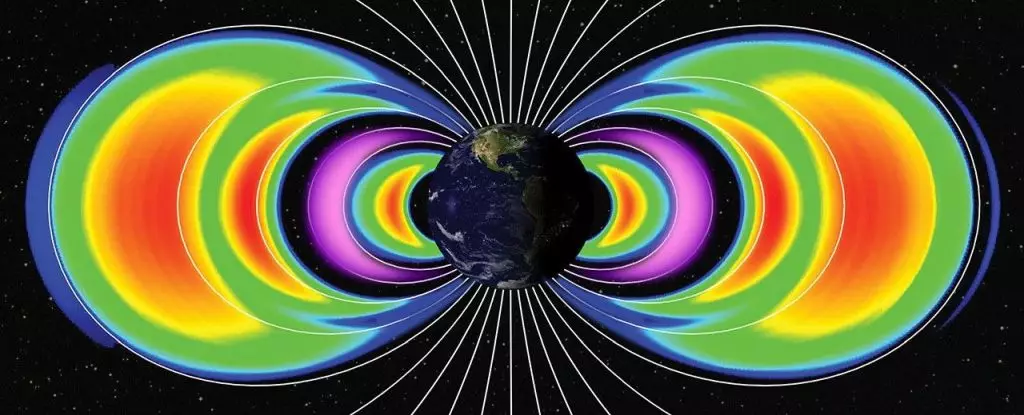In May 2024, Earth experienced an extraordinary solar storm that reverberated far beyond its surface, even affecting deep oceanic regions. Triggered by a series of intense solar flares, this storm unleashed a whirlwind of charged particles that collided with Earth’s magnetic field, leading to a spectacular light show in the sky and significant changes within our planet’s radiation environment. As auroras danced in unusually low latitudes, the ramifications of this cosmic event began to unfurl, leaving scientists astounded and prompting a wave of investigation into the storm’s longer-term effects.
In the aftermath of the May solar storm, researchers uncovered the existence of two new temporary radiation belts, a phenomenon that was documented using data from NASA’s Colorado Inner Radiation Belt Experiment CubeSat. One belt was predominantly made up of high-energy electrons, a discovery not completely unexpected given prior observations from similar solar events. However, the second belt, which contained energetic protons, marked an unprecedented finding for the scientific community. Physicist Xinlin Li from the University of Colorado Boulder expressed disbelief at this novel discovery, stating, “When we compared the data from before and after the storm, I said, ‘Wow, this is something really new,'” indicating that these findings could reshape our understanding of solar interactions with terrestrial magnetic fields.
The Function of Radiation Belts
Radiation belts are integral to understanding a planet’s magnetic framework, serving as a natural defense against harmful solar particles. Our planet is encircled by the Van Allen belts, two permanent structures that act as barriers, absorbing and filtering out dangerous radiation emitted by the Sun. The inner belt is closer to Earth while the outer belt extends further into space. These belts gain power from solar activity, and during periods of heightened solar emissions—such as coronal mass ejections and flares—the belts can swell and change composition. The May 2024 solar storm not only enhanced existing radiation but also introduced new and unexpected elements into this already dynamic system.
One of the most intriguing aspects of the new radiation belts is their remarkable longevity compared to their predecessors. Those previously observed typically dissipated within weeks, yet these newly formed belts persisted for an astonishing three months. Although subsequent solar storms later in June and August 2024 disrupted the stability of these belts, decreasing their density, remnants of these particles remained in orbit. The research indicates that the proton belt specifically could last for over a year, presenting new opportunities—and challenges—for the study of cosmic radiation.
Understanding the Risks and Implications
The presence of high-energy particles in Earth’s orbit is not just a subject of interest for space scientists but poses tangible risks for satellites and other technologies operating within this environment. With the current uncertainty surrounding the particle density and the specific threats posed by these newly formed radiation belts, further studies are essential. Engineers and researchers must quantify the danger these belts represent to communication systems, GPS satellites, and other technologies that rely on a stable orbital environment. Understanding the longevity and decay of these radiation belts can inform design strategies to mitigate risks, ensuring the continued functionality of our technological infrastructure in the face of such dynamic cosmic phenomena.
The solar storm of May 2024 serves as a catalytic event that opens new chapters in our understanding of space weather and its intricate relationship with Earth. It has not only revealed new dimensions of our magnetic environment but also highlighted the importance of ongoing monitoring and research into the effects of solar activity. As we enhance our tools and methodologies for studying these phenomena, our ability to predict and respond to solar storms will only improve, allowing us to navigate the celestial intricacies of our universe with greater knowledge and preparedness.


Leave a Reply